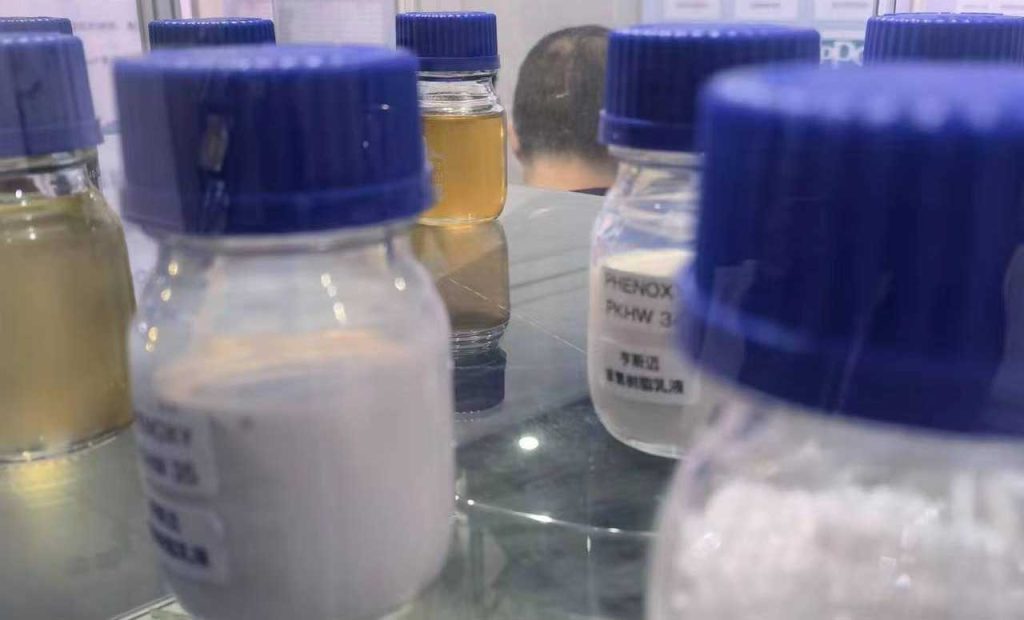Hidroksipropil metil celuloza
Ključna uloga HPMC u ljepilima za pločice |Hidroksipropil metil celuloza
HPMC, sintetiziran kroz specijalizirani proces eterifikacije koji uključuje visoko čistu pamučnu celulozu u alkalnim uvjetima, preuzima ključnu ulogu kao aditiv u povećanju viskoznosti formulacija ljepila za pločice. Općenito, viskoznost otopine HPMC hidroksimetil celuloze izravno utječe na viskoznost dobivenog ljepila za pločice, čime se utječe na učinkovitost ljepila u vezivanju s podlogom. Posebno, Povećanje viskoznosti i adhezijske kvalitete ljepila odgovara proporcionalnom povećanju viskoznosti otopine HPMC hidroksimetil celuloze.
Plijenska ljepila predstavljaju vitalnu komponentu za pričvršćivanje pločica na površine poput betona ili blok zidova. Sastoji se od elemenata poput cementa, pijesak, vapnenac, HPMC hidroksipropilmetilceluloza, i dopunski aditivi, Plijenska ljepila pripremljena su za primjenu nakon ugradnje vode. HPMC hidroksimetil celuloza, odlikovan kao superiorni celulozni eter, Uživa u širokom prihvaćanju u građevinskom sektoru, posebno unutar domene prijava za ljepljive pločice. Funkcionira kao sredstvo za trostruko djelovanje, HPMC hidroksipropilmetilceluloza doprinosi kao moćan zgušnjivač, agent za zadržavanje vode, I vezivo. Ovi kumulativni učinci sinergistički poboljšavaju ukupnu izvedbu i upravljivost proizvoda za ljepilo za pločice.
Što su ljepila za pločice? | Hidroksimetil celuloza
Ljepila za pločice služe kao ljepila odgovorna za sigurno lijepljenje pločica na različite površine ili podloge. Zamršena međuigra ovih komponenti zahtijeva ljepljivu tvar s prilagođenim karakteristikama kako bi se osiguralo učinkovito lijepljenje.
Karakteristična svojstva HPMC-a postaju posebno očita u njegovoj sposobnosti da utječe na fizičke i kemijske aspekte ljepila za pločice. Djeluje kao kritični modifikator, Hidroksipropil metil celuloza HPMC značajno doprinosi ponašanju i učinku ljepila, u konačnici određujući učinkovitost ljepila u postizanju trajnih i pouzdanih spojeva.
Dobiva se kroz specijalizirani proces eterifikacije koji uključuje visoko čistu pamučnu celulozu u alkalnim uvjetima, HPMC hidroksimetil celuloza pokazuje prilagođene osobine koje je čine posebno prikladnom za građevinsku industriju, posebno u formulacijama ljepila za pločice. Njegova osebujna molekularna struktura omogućuje mu skladnu interakciju s ostalim komponentama ljepljive smjese, olakšavajući stvaranje konzistentne i stabilne formulacije.
HPMC rješenja za različite scenarije primjene ljepila za pločice
Hidroksipropil metilceluloza HPMC pojavljuje se kao svestrani dodatak u poboljšanju učinkovitosti ljepila. HPMC je vješt u prilagođavanju jedinstvenim zahtjevima koje postavljaju različite postavke i sljedeći uvjeti:
Ljepilo za unutarnje pločice
U prostorima kao što su kuhinje i kupaonice, predstavljaju dinamično okruženje u kojem se atributi HPMC-a pokazuju neprocjenjivima. HPMC Hidroksipropilmetilceluloza, sa svojim intrinzičnim sposobnostima zadržavanja vode, osigurava optimalan sadržaj vlage potreban tijekom procesa stvrdnjavanja ljepila. Ovo je osobito značajno u zatvorenim prostorima, gdje kontrolirano stvrdnjavanje postaje bitno za poticanje izdržljive i trajne veze. HPMC-ova svojstva zgušnjavanja pojačavaju konzistenciju ljepila, dajući mu potrebnu teksturu za besprijekornu primjenu. Ovo je najvažnije u scenarijima u zatvorenom prostoru gdje je pedantna preciznost neophodna za postizanje besprijekornog postavljanja pločica. Kemijska kompatibilnost HPMC-a s drugim komponentama dodatno doprinosi stabilnosti i ujednačenosti ljepila, čineći ga prikladnim za unutarnje primjene.
Hidroksipropil metilceluloza (HPMC) nalazi vrhunsku upotrebljivost unutar ljepila za pločice zbog svojih višestrukih svojstava. Primarna svrha integracije HPMC-a u ljepila za pločice vrti se oko njegove sposobnosti zadržavanja vode i zgušnjavanja. Ovo uključivanje služi temeljnim ciljevima povećanja krajnje čvrstoće skrućivanja ljepila za pločice, produžavanje trajanja tijekom kojeg ljepilo ostaje održivo (otvoreno vrijeme), i usavršavanje njegove ukupne obradivosti.
Ljepilo za vanjske pločice
Strašni izazovi koje postavljaju vanjski čimbenici kao što je izloženost vodi, fluktuirajuće temperature, a neumoljivim silama prirode prikladno se bave HPMC-ovi višestrani atributi. U okruženjima poput bazena, gdje je otpornost na vodu od najveće važnosti, HPMC Hydroxypropyl Methylcullulose preuzima ulogu pouzdane barijere. Njegove mogućnosti zadržavanja vode i dalje sjaju, Osiguravanje optimalne hidratacije tijekom liječenja, Čak i kad se suoči s stalnom prisutnošću vode. Kompatibilnost HPMC -a s različitim aditivima omogućuje ga da izdrži naprezanja nametnute oštrim klimatskim uvjetima. Bilo da je to na vanjskim zidovima, vanjski balkoni, ili bilo koju vanjsku površinu, Uloga HPMC -a kao stabilizacijskog i poboljšanja agensa unutar adhezivne formulacije ostaje nepokolebljiva.
Hidroksipropil metil celuloza HPMC
Na raspolaganju su dva glavna stupnja hidroksipropil metil celuloze, ovisno o liječenju. Dvije različite kategorije, HPMC bez površine Hidroksipropil metilkululoza i površinski tretman HPMC koji ima različite funkcionalnosti koje HPMC hidroksilmetilceluloza nudi u različitim kontekstima.
HPMC bez površine
Svojstva zadebljanja HPMC-a bez površine dodatno doprinose poboljšanjima koja su svjedočila u suhim minobacačima. Podignošću viskoznosti formulacije, HPMC daje poželjnu konzistenciju koja pomaže u sprečavanju probijanja, pad, ili pretjerani protok tijekom postupka prijave. Ovaj se atribut pokazuje neophodnim, posebno u vertikalnim primjenama gdje je neophodno održavanje strukturnog integriteta i ujednačenosti primijenjenog materijala. Štoviše, Sposobnost HPMC -a da poboljšava koheziju smjese dodaje ukupnu snagu i integritet izliječenog maltera ili kita.
Površinski tretman HPMC hidroksipropil metil celuloza
Površinski tretman hidroksipropil metil celuloza (HPMC) obuhvaća specijaliziranu varijantu poznatu po svojoj odgođenoj topljivosti, karakterističan atribut koji otključava ekspanzivno područje aplikacija. Ovaj poseban oblik HPMC hidroksipropil metilkulluloze uvodi jedinstvenu dinamiku u krajolik građevinskih materijala, Pronalaženje svoje niše u različitim formulacijama kao što su sivi kalcisti.
Jedna od prednosti korištenja odgođene topljivosti HPMC hidroksipropilmetilceluloza unutar sivog malterata utemeljenih na kalcijem i cementa je njegov utjecaj na obradivost i dugovječnost. Kako se ova HPMC hidroksipropilna varijanta metil celuloze polako otapa, Raspršiva svoja svojstva ravnomjerno u cijeloj smjesi, doprinose dosljednijoj i kontroliranijoj primjeni. Postepeno otapanje također se usklađuje s postupkom stvrdnjavanja i očvršćivanja materijala, sinergijski nadopunjujući ukupno vrijeme stvrdnjavanja i razvoj snage.
Hidroksipropil metil celuloza za prednosti ljepila za pločice
Ugradnja hidroksipropil metil celuloze u formulacije ljepila za pločice predstavlja mnoštvo karakterističnih prednosti koje odjekuju u cijelom spektru primjene i učinkovitosti ljepila. Ovo su sljedeće prednosti hidroksipropil metil celuloze u ljepilima za pločice:
Manje usporavanje hidratacije cementa | Hidroksi propil metil celuloza
Hidratacija cementa, kemijski proces ključan za vezivanje i stvrdnjavanje ljepila, može povremeno naići na izazove povezane s neželjenim kašnjenjima. Uvod HPMC-a rješava ovu zabrinutost tako što utječe na kinetiku hidratacije cementa. Moduliranjem brzine reakcije i vezivanja čestica cementa, HPMC hidroksipropilmetilceluloza osigurava da ljepilo postiže optimalnu ravnotežu između obradivosti i pravovremene postavke.
Ova je prednost posebno izražena u scenarijima u kojima je precizno vrijeme neophodno, kao što su vremenski osjetljivi projekti ili okruženja karakterizirana fluktuirajućom temperaturom. Vještina HPMC -a u minimiziranju rizika od prekomjerne retardacije čuva sposobnost ljepila da se pridržava u željenom vremenskom okviru. Štoviše, Dinamika kontrolirane hidratacije olakšana HPMC hidroksipropil metilkullulozom doprinosi stvaranju robusne i otporne ljepljive veze.
Izvrsna otpornost
Iskorištavajući svoja svojstvena svojstva zadebljanja, HPMC jača sposobnost ljepila da održava njegovu strukturu i dosljednost kada se primjenjuje okomito. Ova značajka osigurava pouzdano prianjanje ljepila na zidove i druge uspravne podloge bez neželjenog slijeganja ili deformacije. Kao rezultat, majstori mogu raditi s povećanom preciznošću, postizanje točnog postavljanja pločica i optimalnog poravnanja. Doprinos hidroksipropil metil celuloze HPMC otpornosti na spuštanje proteže se izvan faze primjene, jer utječe i na dugotrajnu trajnost i stabilnost postavljenih pločica.
Dobra konzistencija
Hidroksipropil metil celuloza HPMC Hidroksipropil metil celuloza karakteristična molekularna struktura učinkovito povećava viskoznost ljepljive formulacije, što rezultira kohezivnijom i upravljivijom supstancom. Ova poboljšana konzistencija osigurava ravnomjerno prianjanje ljepila na različite površine, promicanje optimalnog lijepljenja i smanjenje rizika od neravnomjernog nanošenja. Doprinos HPMC-a postizanju željene teksture ljepila olakšava precizno postavljanje pločica, omogućujući precizno usklađivanje i besprijekornu integraciju.
Dobra obradivost: Jednostavna upotreba
HPMC-ove sposobnosti zadržavanja vode i zgušnjavanja značajno doprinose postizanju dobre obradive konzistencije u smjesi ljepila. Hidroksipropil metil celuloza HPMC osigurava da ljepilo održava optimalnu teksturu za nanošenje bez napora. Ova poboljšana obradivost pojednostavljuje proces nanošenja i pozicioniranja ljepila, omogućujući obrtnicima postizanje točnih postavljanja pločica uz minimalan napor.
Vrlo dobro radno vrijeme
HPMC također utječe na otvoreno vrijeme ljepila, omogućujući dulje razdoblje u kojem ljepilo ostaje održivo. Ovo produljuje prozor za precizna podešavanja, Dobro usklađivanje s zamršenim zadacima popločanja ili većim projektima gdje je bešavna koordinacija najvažnija. U suštini, Uključivanje HPMC hidroksipropilmetil celuloze unutar formulacija ljepljivih pločica povećava ukupnu manevalnost ljepila, Optimiziranje upotrebljivosti i doprinos pojednostavljenom i učinkovitom postupku popločanosti.
Visoko zadržavanje vode
Intrinzična svojstva HPMC-a kao sredstvo za zadržavanje vode igraju glavnu ulogu u održavanju optimalnih razina vlage unutar ljepljive smjese. Učinkovito zadržavajući vodu tijekom postupka primjene i stvrdnjavanja, Hidroksipropil metil celuloza HPMC Hidroksipropilmetil celuloza osigurava da ljepilo ostaje na odgovarajući način hidrirano, doprinose pravilnom postavljanju ljepila i stvaranju izdržljivog obveznica. Ova karakteristika zadržavanja visoke vode posebno je presudna u scenarijima gdje je kontrolirana hidratacija neophodna, kao što su zatvorene aplikacije ili okruženja sklona brzom isparavanju vlage.
Toplinska stabilnost poboljšana
Hidroksipropil metil celuloza HPMC u formulaciju ljepila za pločice dobiva pojačanu otpornost na toplinske stresore, što je posebno korisno u okruženjima u kojima su temperaturne varijacije uobičajene. Prisutnost hidroksipropilmetil celuloze HPMC djeluje kao stabilizirajuće sredstvo, Omogućavanje ljepila da održava svoje karakteristike performansi čak i u izazovnim toplinskim uvjetima. Ova poboljšana toplinska stabilnost osigurava da svojstva vezanja ljepila ostanu pouzdana i trajna s vremenom, ponovno potvrđujući ulogu HPMC-a kao ključne komponente u podizanju ukupne trajnosti i otpornosti primjena ljepila za pločice u različitim okruženjima.
Dobar Anti-Crack, Protiv skupljanja
Jedinstvena svojstva hidroksipropil metil celuloze HPMC igraju ključnu ulogu u ublažavanju rizika od pukotina i skupljanja koji mogu ugroziti integritet instalacija ljepila. Uključivanjem hidroksipropil metil celuloze HPMC , ljepilo dobiva vrijedno pojačanje protiv strukturalnih ranjivosti koje mogu nastati zbog čimbenika kao što je sušenje, stvrdnjavanje, i temperaturne fluktuacije. Prisutnost HPMC-a pridonosi smanjenju pukotina uzrokovanih naprezanjem i smanjenju nepoželjnog skupljanja, osiguravajući da ljepilo zadrži svoju koheziju i prianjanje na površine. Ova prednost protiv pucanja i anti-obreda posebno je relevantna u scenarijima u kojima su dugotrajna trajnost i otpornost važni kako bi se zajamčila da ljepilo pločica s vremenom ostaje nepokolebljivo.


